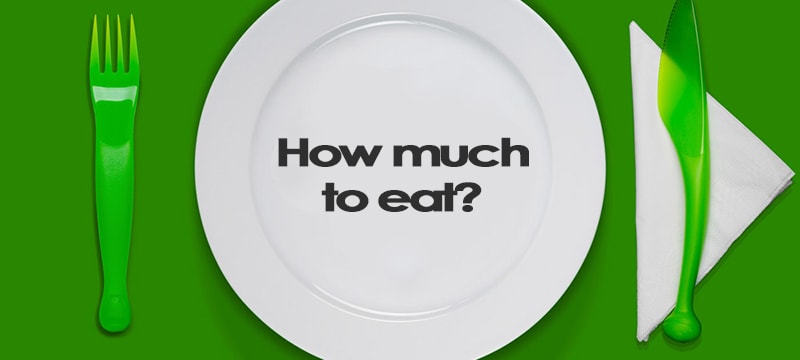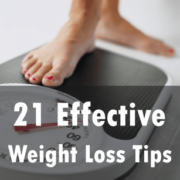 Is there a special event approaching? Reunion? Wedding? Or, perhaps you have finally reached the point of wanting to lose a few pounds and regain some self-confidence.
Is there a special event approaching? Reunion? Wedding? Or, perhaps you have finally reached the point of wanting to lose a few pounds and regain some self-confidence.
Whatever the motivation behind your desire to lose a few pounds, it is not always to jumpstart the process.
If you’re anything like me, giving up ice cream and my favorite (unhealthy) treats makes me want them more.
After two to three days of dodging such temptations, I usually cave in not too long after and then put myself through the guilt of “ruining my diet…again.”
For that reason, it has taken years for me to reach the point of not only detesting the word diet but also reaching the conclusion that no one should actually “go on a diet.”
Let go of the concept of diets.
Rather, make a lifestyle change and learn to live a more quality, healthy life by making better food choices, enjoying treats in moderation and become more physically active.
Now, the purpose of this article is not to get into the details of starting your new healthy life.
It is more to add to your present motivation and encourage YOU to keep going.
A healthier lifestyle is not equivalent to a more boring lifestyle. In fact, it is quite the opposite.
You will begin to feel better about yourself, have more energy and love your new relationship with foods and physical activity.
However, let’s take a quick peak at some of the ideas behind a healthier lifestyle to give you an idea of what I am talking about and have learned through my “diet tenure” in the past.
What to eat to lose weight?
Losing weight and not regaining it is possible, but it takes commitment to healthier choices.

It takes dedication and a certain amount of sacrifice, but not so much that you cannot enjoy life.
Instead of 2 cookies, have one.
Instead of non-diet soda, choose diet soda.
Eventually, you may be ready to stop drinking soda all together and move on to even healthier beverage choices.
Instead of a bowl of ice cream after dinner, have a fat-free, sugar free pudding with cool-whip and berries—fewer calories, less fat and delicious dessert choice.
Or, if you really want ice cream, try one serving (usually ½ cup) of low-fat yogurt with a ½ cup of your favorite berries.
It is also important to properly combine your foods at each meal or snack, and do so in moderation.
To the extent possible, eat protein with carbohydrates and include a small amount of healthy fat; but, do not go overboard and eat two servings of protein if your splurging on a high-carb food choice.
I’ve done that also, and it backfires.
Properly combining foods but eating double the calories is senseless and definitely smart eating.
Here’s an example.
My job treats the office to gourmet bagels, pastries and quiche every Friday morning.
At first, I would somehow walk past the buffet of breakfast foods and make it to my office without snatching anything on the way.
The result?
I thought about that cinnamon swirl bagel all morning.
The longer this went on, the more I wanted that bagel.
So, I eventually got to the point that I did not eat breakfast at home and, instead, brought a small low-fat cheese snack or turkey sausage with me, and ate it along with that cinnamon swirl bagel on Friday mornings.
I found that, my caloric intake was fairly identical to my usual morning breakfast and my morning snack; and, I got to partake of management’s “treat” like everyone else.
My point is that you can still enjoy eating.
You can still participate in social events involving food.
What you cannot do is toss your self-control out the window and binge, just because you “ate a cookie” earlier in the day.
It is all not over after that.
In fact, some experts recommended eating one treat per day to avoid feelings of deprivation.
I tend to agree for those who are able to embrace only one treat per day.
On the contrary, there are some experts who do not so fully support this idea arguing that foods with sugar (and salt) trigger certain saliva glands, thereby increasing your cravings for sugary (or salty) foods the rest of the day.
I have also found that to be true in my own eating habits.
So, I try to satisfy my sweet tooth with fruit when possible.
But, if I desire a low-fat ice cream cone from McDonald’s every once in a while, I go ahead and enjoy it but limiting this to an occasional treat, no more than once per week.
How Much to Eat?

I am a believer in the “calories in, calories out” philosophy when it comes to losing weight, especially for beginners.
As you progress in your healthy lifestyle, you will want to start fine-tuning your diet to more strictly avoid white sugars, white flours and the like.
For now, though, just start with figuring out how many calories you need per day to maintain your weight.
This is based on your Basal Metabolic Rate (BMR) which is, essentially, the number of calories your body burns each day “just by living.”
Another way to look at it is the number of calories your body would burn each day if you did nothing (except breath, of course).
This number varies by individual depending on factors such as age, height, current weight, etc.
For example, my BMR is approximately 1,485 calories per day.
Now, your weight is determined by the number of calories you eat per day minus the number of calories burned, this includes your BMR as well as additional activity you perform.
There are many calculators available online to help you find both your BMR and the number of calories you need each day to maintain your weight based on your activity level. Try typing in keywords such as “calories needed to maintain weight” and “BMR calculator.”
You should find some decent calculators to at least provide a ballpark number to begin with. Here’s such one.
For instance, my latest calculation showed that I burn approximately 1,632 calories per day through my normal daily activities at a “moderately active” level.
This was based on my exercise a few times per week as well as my Monday through Friday office job where I do not get a lot of activity.
Yours may be more or less depending on your activity level, profession, current weight, height and other factors.
Now, once you have that number, you can figure out how many calories you should intake per day to lose weight.
You will need to have a deficit of 3,500 to lose one pound.
With no extra exercise, you could lose one pound per week by decreasing your daily caloric intake by 500 calories.
For me, I would need to consume no more than approximately 1,230 (1632 – 500) calories to lose one pound per week with no additional exercise beyond what I normally do.
Knowing myself, though, it is a real challenge to not exceed 1,200 calories per day (I’ve tried!).
So, it would be a better option for me to try to reduce my caloric intake by only 250 calories and burn 250 calories per day in physical activity.
This would still account to one pound lost per week.
Generally, my goal is to limit my caloric intake to 1,700 if I exercise that day and 1,450 if I do not exercise that day.
The more activity I get, the more liberal I can be in my caloric intake but, of course, in moderation.
This is one reason it is good to learn your BMR is so you can gage your eating on days when your activity level is significantly lower.
Now, I must mention that I do not aim for 1 pound per week for myself but 1 to 2 pounds per week is usually the considered safe weight loss.
Any more than that and you may be at risk for regaining the weight and, probably more which is often the case.
Personally, I am happy with a 1/2 pound per week and sometimes even maintenance since my goal is to maintain a healthy lifestyle rather than quick weight loss from a quick diet that will just as quickly fall to the wayside.
Do I have to exercise?

Technically, the answer to this question is “it depends.”
There are many benefits of regular exercise, and it is a particularly effective way to achieve permanent weight loss.
As discussed above, your weight is determined by the number of “calories in” minutes “calories out,” and exercise is can significantly help burn more calories.
Physical activity can help you burn extra calories from foods you eat.
Physical activity is also essential to a healthy lifestyle.
It can improve your cardio health, strengthen your muscles, control diabetes and prevent many diseases.
Regular exercise can also help you better manage stress, with many using exercise as a “stress reliever.”
It can also help improve your mood, lessen anxiety, increase energy levels and, generally, help you feel better about yourself.
If you are new to exercise, start with something you enjoy and something simple like walking.
Walking is one of my favorites, and is a great place for beginners to start.
There are other options like running, the elliptical machine, swimming, aerobics and more.
Strength training is also very beneficial and should be included in your exercise regimen.
The more muscle you gain, the more calories you will burn while doing your normal activities. Circuit training is also a terrific option.
If you are short on time, circuit training is a good choice allowing you to enjoy some benefits of cardio in combination with toning your muscles.
To find a good exercise program, talk to your doctor and perhaps a personal trainer who can provide some instruction and guidance on what best fits your needs and goals. Another useful resource is meeting with a nutritionist.
He or she can help establish an eating plan that best suits your lifestyle and food likes/dislikes, or at least teach you a little more about how to live a healthier lifestyle through the foods you eat.












